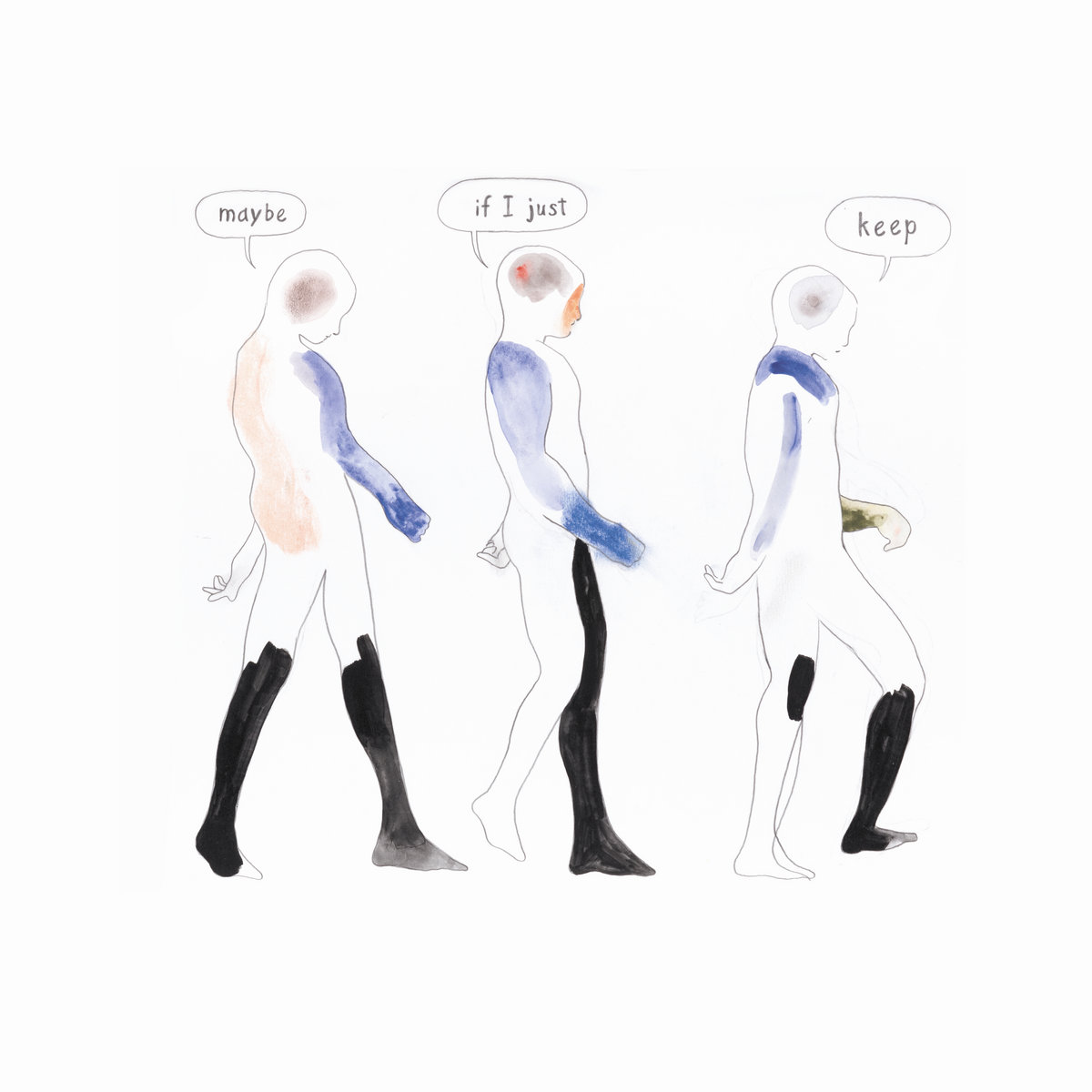 This latest album from the consistently fascinating Atkinson is yet another plunge into a vibrantly textured and otherworldly dreamspace, this time drawing inspiration from an abstract dialog between house and landscape. Or more specifically, "Inside and outside, different ways of orienting a body towards the world." In keeping with that theme, Atkinson "revisited twentieth-century women artists who variously chose, and were chosen by, their homes as a place to work." Naturally, there are some other conceptual layers as well (this being a Félicia Atkinson album, after all). One of the more interesting ones is the decision to give the album a name that resembles a "fake title of a fake Godard film." In an obvious sense, that is apt given how Image Langage feels like a film with no actual images, but Godard's mischievous meaning-dissolving weirdness is also manifested in how Atkinson wields and repurposes her sounds. In more concrete terms, that means that Atkinson deliberately used instruments alternately like field recordings or characters in a murky, surreal narrative and often reduces her voice to an unpredictably drifting and elusive presence. The overall effect is like being lost in a beautiful dream where an unreliable narrator periodically drifts in with riddle-like non-clues that only lead me deeper into Atkinson's eerie, soft-focus enigma.
This latest album from the consistently fascinating Atkinson is yet another plunge into a vibrantly textured and otherworldly dreamspace, this time drawing inspiration from an abstract dialog between house and landscape. Or more specifically, "Inside and outside, different ways of orienting a body towards the world." In keeping with that theme, Atkinson "revisited twentieth-century women artists who variously chose, and were chosen by, their homes as a place to work." Naturally, there are some other conceptual layers as well (this being a Félicia Atkinson album, after all). One of the more interesting ones is the decision to give the album a name that resembles a "fake title of a fake Godard film." In an obvious sense, that is apt given how Image Langage feels like a film with no actual images, but Godard's mischievous meaning-dissolving weirdness is also manifested in how Atkinson wields and repurposes her sounds. In more concrete terms, that means that Atkinson deliberately used instruments alternately like field recordings or characters in a murky, surreal narrative and often reduces her voice to an unpredictably drifting and elusive presence. The overall effect is like being lost in a beautiful dream where an unreliable narrator periodically drifts in with riddle-like non-clues that only lead me deeper into Atkinson's eerie, soft-focus enigma.
This album is billed as “an environmental record” about “getting lost in places imagined and real.” Naturally, one of the real places central to the album is Atkinson’s home on the “wild coast of Normandy” where much of the writing and recording took place (the rest occurred at a lakeside residency in Switzerland). I bring all this up because Image Langage has an unusually enigmatic and slippery aesthetic that blurs the line between songcraft and more abstract/outré fare. At times, the album can feel very “ambient,” but it is actually chasing something akin to impressionistic clairvoyance/clairaudience. While fully grasping the shades of meaning lurking within a Félicia Atkinson is often a tall order, Thea Ballard crafted quite an illuminating statement for the album’s description, noting that Image Langage evokes a visit to Atkinson’s seaside home in which we are “invited to witness Atkinson’s acts of seeing, hearing, and reading in a sonic double of the places they occurred.” In more practical terms, that means that the overall impression left by Image Langage is that of staying in a benignly haunted cottage populated by whispered voices, bleary drones, ephemeral flickers of piano melody, and hallucinatory manipulations of nature sounds. Unsurprisingly, I find that to be characteristically immersive and fascinating Atkinson territory, but Image Langage also has a handful of great individual pieces that transcend the baseline “ASMR-inspired ambient for well-read seaside ghosts” aesthetic. Amusingly, a case could be made that this is Atkinson’s “dub album,” as two of the strongest pieces share some common ground with artists like Pole and loscil.
My favorite piece is the album’s single, “Becoming A Stone,” which features a hushed monologue (“I believe that a fence will keep animals out, just outside the kitchen window") weightlessly drifting over a quiet bed of clicks, pops, a lazily repeating chord, and a wandering, bleary melody. Elsewhere, the more structured “The House That Agnes Built” is the loscil-esque piece, as Atkinson sensuously whispers over billowing, deconstructed dub centered around a sonar-like ping. Those subtle dub techno elements suit Atkinson’s aesthetic quite well, but there are a couple of drone-based pieces that are similarly strong. In particular, “The Lake is Speaking” is classic Atkinson, as it feels like a wandering piano melody is guiding me through a harmonically rich labyrinth of undulating dream drones. The title piece is yet another highlight, as hushed overlapping/doubled voices languorously bubble up from an uneasy backdrop of flute and/or harmonium drones. It all adds up to yet another wonderfully sublime album from a consistently compelling and endlessly evolving artist on a path entirely her own. Image Langage feels like getting a glimpse of someone’s most intimate journals, but only after an erasure poet got there first, leaving behind only a series of maddeningly enticing decontextualized fragments and a lingering sense of a beautiful mystery destined to remain forever unsolved.
Read More

